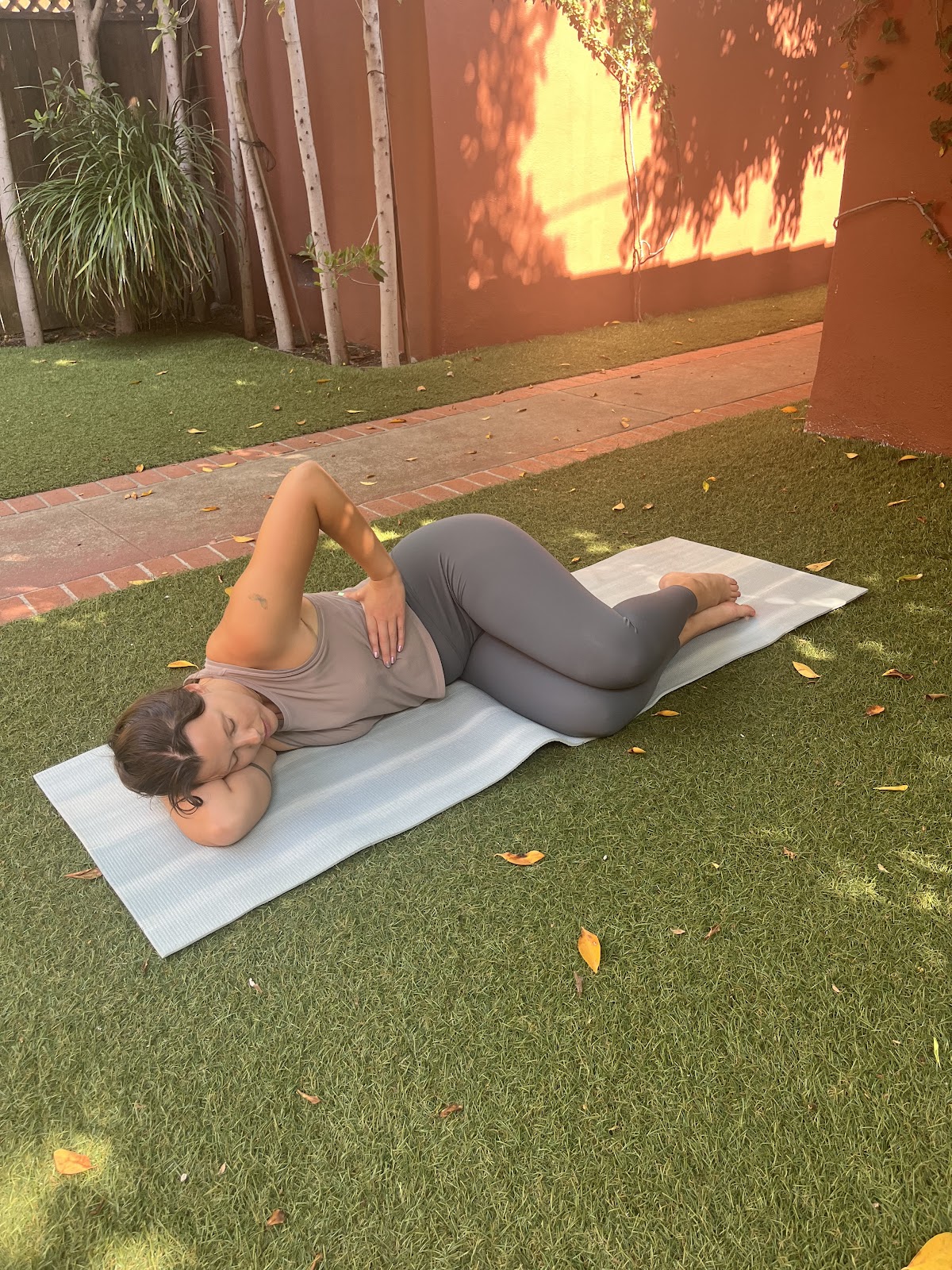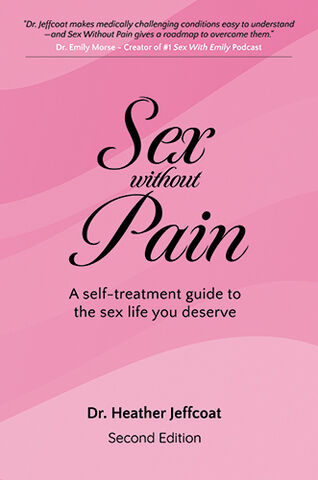
The Femina Physical Therapy Blog
Featuring original articles by our staff about current events and trends
Explore our insightful blog articles on pelvic health, where we delve into essential topics that empower and educate. From understanding pelvic floor disorders to strategies for conquering infertility, our content is designed for those seeking knowledge and support. We discuss the latest research, expert advice, and practical tips to enhance your well-being and foster a deeper connection to your body.
Featured From the Blog:
Therapeutic Breast Massage in Lactation (TBML)

Therapeutic Breast Massage in Lactation Can Help Make Breastfeeding Less Painful
Breastfeeding is widely accepted as the normal standard for providing nutrition to newborns, however, many women who do not reach their breastfeeding goals. US national data stated that breast pain was a commonly reported reason for women weaning less than 1 month postpartum. Within that segment, 29% of women who participated in the study stated that “breastfeeding was too painful” to continue.
In the same study, 24% of women reported “breasts feel(ing) too full or engorged” as another reason to discontinue breastfeeding prior to 1 month postpartum.1 Currently, The American Academy of Pediatrics recommends exclusive breastfeeding of infants for the first six months of life. As physical therapists who treat patients with postpartum conditions, we are well positioned to make a big impact on patients with breastfeeding related pain and reduce barriers to continued breastfeeding!
Why a Multidisciplinary Team is Best for Treatment of Bloating and Abdominal Distension

Bloating and Abdominal Distension Often Benefit Greatly from Multidisciplinary Treatment
Bloating, abdominal distension, loose stools, constipation, abdominal or pelvic pain, fatigue, brain fog, weakness, nutritional deficiencies…
These symptoms may be caused by a variety of gastrointestinal or pelvic conditions. If you are experiencing any of these symptoms, this article is a good place to start when deciding who to have on your care team, and what treatments can help!
Bloating is the sensation of excess abdominal gas or a feeling of being distended without obvious visible abdominal distension. Some people have a feeling of fullness or discomfort in the upper abdominal area. Abdominal distension is the visible increase in abdominal girth. A multidisciplinary treatment team of primary care physicians (PCPs), gastroenterologists, dieticians/ nutritionists, and physical therapists is ideal to help manage these symptoms and find the root cause. For example, symptoms of bloating and abdominal distension affect 66 - 90% diagnosed with IBS. Getting the proper diagnosis can help direct the best treatment options for you.
Read more: Why a Multidisciplinary Team is Best for Treatment of...
Restorative 20 Minute Home Yoga Practice For Chronic Pelvic Pain

Yoga Practice For Chronic Pelvic Pain Can Be a Very Helpful Routine
As stated in my last blog post, yoga can be so beneficial as a pain management tool due to its ability to modulate the sympathetic nervous system3,4 which plays a large role in chronic pain. The exact mechanism of how yoga helps with chronic pain is still being studied, however, it is reasonable to believe the full body relaxation promoted by a yoga practice helps to decrease tension in key muscle groups- including the hips and pelvic floor which are often tight in people with chronic pelvic pain.
Currently, evidence has mostly focused on one hour long practices as an intervention, although there are some studies that report improvements in pain with shorter practices, such as the routine below. As with any mobility/stretching routine, benefits will be seen with more frequent practice, however even twice weekly can help decrease pain.
Read more: Restorative 20 Minute Home Yoga Practice For Chronic...
How Posture Affects Pelvic Floor Health: Key Insights for Women in Los Angeles & Atlanta
Unpublished- Details
- Written by: Debbie Dy, PT, DPT
- 113 Views

At Femina Physical Therapy, we specialize in helping women in Los Angeles and Atlanta improve pelvic floor health through expert physical therapy. While posture is often linked to back pain or fitness, many people don’t realize that poor posture can directly impact pelvic floor function—leading to issues like urinary incontinence, pelvic organ prolapse, and chronic pelvic pain.
Why Pelvic Floor Health Matters
The pelvic floor muscles (PFMs) are a vital part of your core, supporting organs such as the bladder, intestines, and uterus. These muscles also control bladder and bowel function, contribute to sexual wellness, and help maintain core stability. When pelvic floor muscles become weak, overactive, or dysfunctional, you may experience:
Urinary incontinence
Pelvic organ prolapse
Constipation
Chronic pelvic pain
This makes pelvic floor therapy essential—not only for symptom relief but also for improving posture and overall wellness.
Research Links Posture to Pelvic Floor Disorders
A pivotal 2017 literature review by Zhoolideh et al. explored the connection between posture and pelvic floor dysfunction (PFD). The study revealed that women with PFD commonly displayed postural imbalances such as:
Increased thoracic kyphosis (rounded upper back)
Decreased lumbar lordosis (flattened lower back)
Forward-rounded shoulders
More importantly, the research showed a strong link between poor posture and excessive pelvic floor muscle contraction, which can worsen pelvic floor issues.
How Poor Posture Triggers Pelvic Floor Dysfunction
Slouching—whether sitting or standing—can negatively affect the pelvic floor by:
1. Increasing abdominal pressure, making symptoms like urinary incontinence, pelvic organ prolapse, constipation and other pelvic floor dysfunction worse.
2. Restricting diaphragm movement, limiting the pelvic floor’s ability to relax and lengthen during breathing.
This constant tension may worsen dysfunction over time.
How to Improve Pelvic Floor Health Through Better Posture
If you’re experiencing pelvic floor symptoms, improving your posture is a great place to start. At Femina Physical Therapy, we provide specialized treatment in both Los Angeles and Atlanta designed to restore alignment and support pelvic health.
Here are some key treatment strategies we offer:
✅ Spinal Mobilization
Our physical therapists use gentle manual techniques to improve spinal mobility and ease tension, encouraging a natural, upright posture that benefits your pelvic floor muscles.
✅ Core & Pelvic Floor Strengthening
Your pelvic floor works in tandem with your core muscles. We create personalized exercise programs that strengthen the deep core, back, and diaphragm to improve posture and pelvic floor stability.
✅ Stretching & Mobility Programs
Tightness in the hips, lower back, and pelvis can contribute to poor posture and pelvic floor dysfunction. Our therapists guide you through yoga-inspired stretches, dynamic movements, and mobility exercises to enhance flexibility and reduce strain.
✅ Ergonomic & Posture Training
We educate clients on maintaining good sitting and standing posture throughout the day. Tips include:
- Sitting with feet flat, spine neutral, and core lightly engaged.
- Avoiding excessive arching or tucking of the pelvis.
- Taking regular standing breaks if you work long hours seated.
Start Your Pelvic Floor Therapy Journey Today
At Femina Physical Therapy, we take a whole-body approach to healing. Our expert physical therapists hold Doctorates—and many of whom are also certified in yoga, Pilates, or strength & conditioning—help women in Los Angeles and Atlanta regain confidence, comfort, and control.
If you’re searching for pelvic floor therapy in Los Angeles or pelvic floor therapy in Atlanta, we’re here to help.
👉 Ready to feel stronger and more aligned?
Contact Femina Physical Therapy today to schedule your pelvic health consultation.
References:
Zhoolideh P et al. Are There Any Relations Between Posture and Pelvic Floor Disorders? Crescent J Med Biol Sci, 2017.
Meyer I et al. Pelvic Floor Symptoms and Spinal Curvature in Women. Female Pelvic Med Reconstr Surg, 2016.
Jórasz K et al. Posture Correction Therapy and Pelvic Floor Muscle Function. Int J Environ Res Public Health, 2022.
Sapsford RR et al. Sitting Posture Affects Pelvic Floor Muscle Activity. Aust J Physiother, 2006.
How Physical Therapy Can Help Manage Polycystic Ovarian Syndrome (PCOS) Symptoms in Los Angeles & Atlanta
Unpublished- Details
- Written by: Debbie Dy, PT, DPT
- 73 Views

At Femina Physical Therapy, we understand the challenges that come with Polycystic Ovarian Syndrome (PCOS)—a common hormonal disorder affecting many women of reproductive age. While PCOS is often associated with hormonal imbalances, it also has significant metabolic and physical impacts. Fortunately, physical therapy for PCOS can play a vital role in managing symptoms and improving quality of life.
What Is Polycystic Ovarian Syndrome (PCOS)?
- PCOS is the most common endocrine disorder among women of reproductive age.
- Alarmingly, up to 75% of women with PCOS in the U.S. remain undiagnosed—partly because symptoms are often dismissed or normalized.
- The exact cause of PCOS is unknown, but family history increases your risk. It’s also associated with obesity, though PCOS itself can cause weight gain.
- Common complications include insulin resistance, infertility, obesity, and increased risk for cardiovascular disease.
How Is PCOS Diagnosed?
A diagnosis requires meeting two out of these three criteria:
1. Irregular Ovulation
This may appear as:
- Missed or irregular menstrual cycles (normal cycles range from 21–35 days).
- Women with PCOS often experience infrequent or absent periods.
2. Hyperandrogenism (Elevated Androgens)
- Diagnosed via blood tests measuring testosterone levels.
- Symptoms can include:
- Excess facial or body hair (hirsutism).
- Acne.
- Scalp hair thinning or hair loss.
- Excess facial or body hair (hirsutism).
3. Polycystic Ovaries
- Diagnosed via pelvic ultrasound.
- Ovaries may appear enlarged with multiple small follicles (the classic “string of pearls” pattern).
The Link Between Insulin Resistance & PCOS
Many women with PCOS experience insulin resistance, which limits the body’s ability to process glucose effectively. This leads to:
- Higher fat storage.
- Increased difficulty in losing weight.
- Higher risk of type 2 diabetes.
However, not all PCOS patients struggle with weight—each case is unique.
Common PCOS Treatment Options
Treatment plans often include:
- Oral contraceptives to regulate menstrual cycles.
- Insulin-sensitizing medications like Metformin to improve blood sugar control.
- Nutritional adjustments and regular exercise to support weight management and overall metabolic health.
How Physical Therapy Can Support PCOS Management
At Femina Physical Therapy, we specialize in PCOS physical therapy that goes beyond generic exercise programs. Here’s how we help:
✔ Improve Insulin Sensitivity
Physical therapy-guided strength training and aerobic exercise can naturally improve insulin resistance.
✔ Manage Weight Safely & Effectively
Targeted fitness plans support sustainable weight management while reducing inflammation and boosting energy levels.
✔ Address Pelvic Pain
Many women with PCOS experience pelvic pain. We provide:
- Pelvic floor physical therapy to reduce tension and improve function.
- Customized stretching and core exercises for pelvic support.
✔ Enhance Overall Wellness
Our holistic approach includes:
- Improving posture and core stability.
- Reducing stress through mindful movement.
- Promoting hormonal balance through individualized care.
Why Choose Femina Physical Therapy in Los Angeles or Atlanta?
Our expert therapists specialize in women’s health and pelvic floor therapy. We blend advanced physical therapy techniques with personalized PCOS care plans tailored to your unique needs. Whether you’re in Los Angeles or Atlanta, we are ready to guide you toward better health.
Ready to Take Control of Your PCOS Symptoms?
If you're looking for PCOS physical therapy in Los Angeles or Atlanta, Femina Physical Therapy is here for you. Our specialists provide compassionate, whole-body care designed to help you feel your best.
📞 Contact us today to schedule your consultation!
References:
Christ JP, Cedars MI. Current Guidelines for Diagnosing PCOS. Diagnostics (Basel). 2023.
Barber TM, Hanson P, Weickert MO, Franks S. Obesity and PCOS: Pathogenesis & Management. Clin Med Insights Reprod Health. 2019.
Morin-Papunen LC, et al. Metformin vs. Oral Contraceptives in PCOS. J Clin Endocrinol Metab. 1998.
Hutchison SK, et al. Exercise in PCOS Management. Hum Reprod Update. 2011.
How Pelvic Floor Therapy Supports Vaginal Microbiome Health: Mycoplasma, Bacterial Vaginosis & More
Unpublished- Details
- Written by: Debbie Dy, PT, DPT
- 82 Views

At Femina Physical Therapy, we take a holistic approach to pelvic health. A healthy vaginal microbiome is essential not only for reproductive wellness but also for pelvic floor function, immunity, and overall well-being. Increasing research shows that disruptions to the vaginal microbiome—due to stress, hygiene habits, or recurrent infections like bacterial vaginosis (BV) and mycoplasma—can worsen pelvic floor dysfunction.
In this blog post, we’ll explore how pelvic floor therapy can support microbiome balance, improve vaginal health, and help you manage conditions like BV and mycoplasma.
The Vaginal Microbiome: A Cornerstone of Vaginal & Pelvic Health
The vaginal microbiome is a complex, dynamic ecosystem crucial to women’s health. A balanced microbiome protects against infections, supports fertility, and maintains optimal pH levels.
✅ The Role of Lactobacilli
Beneficial Lactobacilli bacteria dominate a healthy vaginal microbiome. They produce lactic acid to keep vaginal pH between 3.5 and 4.5, creating an acidic environment that prevents the growth of harmful microbes. Lactobacilli also produce protective compounds like hydrogen peroxide and bacteriocins that guard against infections.
However, when Lactobacilli levels drop, harmful bacteria such as Gardnerella, E. coli, and Mycoplasma can overgrow—leading to conditions like bacterial vaginosis (BV) and increased risk of other infections.
Psychosocial Stress: A Hidden Factor in Vaginal Microbiome Imbalance
Stress impacts far more than your mood—it also alters your vaginal microbiome.
🔸 How Stress Disrupts Vaginal Health:
- Chronic stress elevates cortisol, which can weaken immunity.
- High cortisol reduces protective Lactobacilli populations.
- This increases susceptibility to infections, including BV and mycoplasma.
By managing stress through mindfulness, exercise, and pelvic floor therapy, you can help maintain a healthier vaginal environment.
Hygiene Habits & Vaginal Microbiome Disruption
Certain hygiene practices may do more harm than good.
🔸 Why Douching Harms Vaginal Health:
Research shows that vaginal douching:
- Removes beneficial Lactobacilli.
- Raises the risk of bacterial vaginosis and sexually transmitted infections.
- Is associated with adverse pregnancy outcomes.
Instead, we recommend:
- Avoiding douching entirely.
- Using unscented, mild products.
- Letting your body’s natural processes maintain vaginal balance.
Pelvic Floor Dysfunction, Infections & Microbiome Health: The Connection
Many people don’t realize that vaginal microbiome imbalance and pelvic floor dysfunction often go hand-in-hand.
🔸 Common Infections Linked to Pelvic Floor Dysfunction:
- Bacterial Vaginosis (BV): Discharge, odor, irritation—often worsened by pelvic muscle tension.
- Mycoplasma: A hard-to-detect bacterial infection causing pelvic pain, urinary symptoms, and recurring discomfort.
🔸 How Pelvic Floor Dysfunction Contributes:
- Tight or weakened pelvic muscles can restrict blood flow and impair lymphatic drainage.
- This weakens tissue health and makes it harder to fight off infections.
- Chronic infections may trigger pelvic floor muscle guarding, leading to pain and further dysfunction.
How Pelvic Floor Physical Therapy Supports Vaginal Microbiome Health
At Femina Physical Therapy, we specialize in evidence-based, personalized pelvic floor therapy that addresses both muscle dysfunction and its connection to the vaginal microbiome.
✔ Benefits of Pelvic Floor Therapy for Vaginal Health:
- Release Muscle Tension: Reduces protective guarding and improves pelvic circulation.
- Enhance Blood Flow: Supports tissue healing and a healthier vaginal ecosystem.
- Ease Pelvic Pain: Gentle therapies relieve discomfort from recurrent infections.
- Support Nervous System Function: Pelvic floor therapy calms pelvic nerve hypersensitivity and reduces pain, which may help ease discomfort associated with chronic infections or inflammation.
- Improve Stress Resilience: Promotes hormonal balance, indirectly supporting microbiome health.
Though pelvic floor therapy doesn’t directly alter the microbiome, improving muscle function, reducing stress, and enhancing circulation creates an environment where beneficial bacteria can thrive.
Proactive Tips to Support Your Vaginal Microbiome & Pelvic Health
Alongside pelvic floor therapy, we encourage these steps for optimal vaginal health:
- Reduce Stress: Try mindfulness, meditation, or yoga.
- Eat Probiotic-Rich Foods: Incorporate fermented foods like yogurt and kimchi.
- Avoid Overcleaning: Skip douching and stick to gentle, unscented cleansers.
- Get Regular Check-Ups: See your gynecologist for routine screenings and discuss any symptoms.
- Work with a Pelvic Floor Therapist: Target underlying pelvic dysfunction to improve vaginal comfort and microbiome balance.
Why Choose Femina Physical Therapy for Microbiome & Pelvic Floor Care?
Whether you're seeking help for pelvic floor therapy for bacterial vaginosis in Los Angeles or managing mycoplasma pelvic pain in Atlanta, our therapists are highly trained in advanced, trauma-informed pelvic care. We blend manual therapy, exercise, and holistic wellness strategies to restore your pelvic floor and support your vaginal microbiome.
We’re passionate about empowering women with the knowledge and tools they need to feel confident and comfortable in their bodies.
Conclusion: Your Microbiome, Your Power
The vaginal microbiome is an essential yet often overlooked pillar of women’s health. By protecting its delicate balance—through gentle hygiene practices, stress management, and targeted pelvic floor therapy—you can reduce your risk of infections, ease pelvic discomfort, and improve your overall well-being.
If you have questions about pelvic floor therapy or vaginal microbiome health, our expert team at Femina Physical Therapy is here to help.
📞 Contact Femina Physical Therapy today to start your pelvic health journey.
References:
- Amabebe, Emmanuel, & Dilly OC Anumba. “Psychosocial Stress, Cortisol Levels, and Maintenance of Vaginal Health.” Frontiers in Endocrinology, 2018.
- Lewis, Felicia MT, et al. “Vaginal Microbiome and Its Relationship to Behavior, Sexual Health, and STDs.” Obstetrics & Gynecology, 2017.
- Aslan, Erdogan, & Nadia Bechelaghem. “To ‘Douch’ or Not to ‘Douch’: Hygiene Habits May Have Detrimental Effects on Vaginal Microbiota.” Journal of Obstetrics and Gynaecology, 2018.
Hutchison, S. K., et al. “The Role of Exercise in the Management of Polycystic Ovary Syndrome.” Human Reproduction Update, 2011.
Lichen Sclerosus & Pelvic Floor Physical Therapy: How to Manage Symptoms & Improve Vulvar Health
Unpublished- Details
- Written by: Debbie Dy, PT, DPT
- 89 Views

Lichen Sclerosus: What You Need to Know About This Common Yet Overlooked Vulvar Condition
Have you heard of Lichen Sclerosus (LS)?
It’s a chronic skin condition that affects the genital and anal areas, though it can appear elsewhere on the body. While LS can affect anyone, it’s most common in women after menopause. However, it may also occur in men and children, though less frequently.
At FeminaPT, we’re passionate about raising awareness around vulvar health conditions like LS—and how pelvic floor physical therapy can play an essential role in your healing journey.
What Does Lichen Sclerosus Look Like?
Lichen sclerosus typically presents as:
Thin, white, shiny, or wrinkled patches of skin
Areas that may feel itchy, sore, or painful
Fragile skin that tears or bruises easily
In more advanced cases, LS may cause:
Scarring
Labial fusion (where the labia stick together)
Clitoral adhesions (clitoral phimosis)
Vaginal atrophy (thinning of vaginal tissues)
These changes can significantly affect sexual health, urination, and daily comfort.
What Causes Lichen Sclerosus?
The exact cause of LS isn’t fully understood, but research suggests several contributing factors:
Hormonal changes, especially post-menopause
Autoimmune responses, where the immune system mistakenly attacks healthy skin
Genetics—it sometimes runs in families
Oxidative stress, which involves damage from unstable molecules in the body
Many people with LS also have other autoimmune conditions, such as thyroid disease or vitiligo.
How Is LS Diagnosed?
A healthcare provider can often diagnose LS by examining the affected skin. However, if there’s any uncertainty or concern for vulvar cancer (which LS slightly increases the risk for), a biopsy may be performed.
Treatment Options for Lichen Sclerosus
The primary goals of LS treatment are to:
Relieve symptoms
Prevent progression
Reduce cancer risk
Common treatments include:
1. Topical Steroid Creams:
The gold standard for LS treatment, potent corticosteroid creams reduce inflammation and promote healing.
2. Immune-Modulating Creams:
If steroids aren’t effective, medications like tacrolimus or pimecrolimus may be used to calm immune responses.
3. Hormone Therapy:
Hormonal deficiency often coexists with LS, especially after menopause. In some cases, topical estrogen may be prescribed to improve vulvar tissue health and reduce dryness or itching alongside other treatments.
Important: Early treatment is key to preventing permanent scarring or functional impairments.
Why Pelvic Floor Physical Therapy Matters for LS
While medical treatments focus on inflammation and skin health, pelvic floor physical therapy can play a crucial role in improving comfort, function, and quality of life for people living with LS.
At FeminaPT, our pelvic health physical therapists are specially trained to address:
Pain with intimacy (dyspareunia)
Clitoral phimosis (adhesion and restriction of the clitoral hood)
Pelvic floor muscle tension or dysfunction
How Does It Work?
We use gentle, evidence-based techniques such as:
Myofascial release
Soft tissue mobilization
Clitoral hood mobilization (to gently address adhesions and improve tissue mobility)
Breathwork and nervous system regulation to reduce protective muscle guarding
These hands-on therapies help to:
Improve circulation and tissue flexibility
Reduce pain
Restore normal movement and comfort during daily activities and sexual function
Supporting Research:
A 2015 study published in The Journal of Women's Health Physical Therapy showed that specific myofascial release techniques led to significant improvement in clitoral phimosis and painful intercourse among patients with LS.²
Additionally, a 2024 review in the Journal of Personalized Medicine emphasized the need for a multidisciplinary approach—including physical therapy—for optimal vulvar health outcomes.³
Why Stress & Emotional Support Also Matter
Living with LS can be physically and emotionally challenging. Stress may worsen symptoms or lead to protective pelvic muscle tension. Our holistic care approach includes:
Stress-reduction techniques
Breathing exercises
Education about pelvic health
Support for body confidence and sexual well-being
The Femina PT Takeaway
Lichen sclerosus doesn’t just affect the skin—it can impact daily function, sexual health, and overall well-being. However, with the right medical treatment and pelvic floor physical therapy, many people experience significant relief.
If you notice:
Persistent itching
White or wrinkled patches of skin
Pain with intimacy or urination
Don’t wait. Seek care from your healthcare provider and ask about integrating pelvic floor therapy into your treatment plan.
Our team at FeminaPT is here to support you through every step of your healing journey.
References
De Luca DA, et al. Lichen sclerosus: The 2023 update. Front Med (Lausanne). 2023;10:1106318.
Morrison P, et al. The Use of Specific Myofascial Release Techniques by a Physical Therapist to Treat Clitoral Phimosis and Dyspareunia. J Women's Health Phys Ther. 2015;39(1):17-28.
Popa A, et al. Vulvar Lichen Sclerosus: Navigating Sex Hormone Dynamics and Pioneering Personalized Treatment Paradigm. J Pers Med. 2024;14(1):76.
- Details
- Written by: Heather Jeffcoat, DPT
- 294 Views
- Details
- Written by: Heather Jeffcoat, DPT
- 357 Views
- Details
- Written by: Heather Jeffcoat, DPT
- 302 Views
- Details
- Written by: Heather Jeffcoat, DPT
- 138 Views
Myofascial release therapy is an effective approach for addressing various pain-related issues. By focusing on reducing tension in the fascia, a type of connective tissue that surrounds the muscles, this therapeutic method has gained popularity for its ability to improve well-being. Fascia can be thought of as a web that holds everything together; when it tightens or becomes damaged, discomfort and pain may result. Myofascial release provides relief by relaxing and loosening the fascia, leading to smoother movements and less pain.
People often seek myofascial release therapy for pain relief, especially in cases involving stubborn trigger points. These are often likened to knots in the muscle tissues and can create a sore feeling that interferes with everyday activities. Addressing these trigger points is key to experiencing the full benefits of the therapy. With targeted techniques aimed at alleviating these specific areas, individuals often find significant relief, making myofascial release therapy a valuable tool in their pain management toolkit.
Understanding Trigger Points
Trigger points are small, localized areas within muscles that can cause significant discomfort. They are often described as sensitive spots, sometimes referred to as knots, that form due to muscle overuse, stress, or injury. These points act like traffic jams in the muscle fibers, with a build-up of tension that needs to be released. Understanding how these develop is the first step in addressing them effectively.
Typically, trigger points arise when muscles are subjected to repetitive strain or poor posture. For example, sitting at a desk for long periods with little movement can lead to small tears or inflammation in the muscle fibers. As these persist, they form tight knots that can cause sharp, aching pains that may even radiate to other parts of the body. Common symptoms include headaches, neck pain, and lower back pain, which are often linked to trigger point activity.
Recognizing the hallmark signs of trigger points is crucial for tackling these issues. Stiffness in the affected area, limited movement, and persistent muscle soreness are tell-tale signs. This awareness helps in seeking appropriate treatment methods, such as myofascial release therapy, that directly target these points, offering a path to relief and improved muscle function.
How Myofascial Release Therapy Works
Myofascial release therapy is all about relaxing tight muscles and releasing trigger points. It focuses on hands-on techniques to stretch and manipulate the fascia and the underlying muscle tissues. This therapy involves applying gentle, sustained pressure on the myofascial tissue to unlock any tightness and ease tension in the affected areas.
Therapists use their hands to identify and work on areas of tension. They slowly stretch and apply pressure, giving the fascia time to relax and stretch, helping to restore normal movement. Sometimes, tools like foam rollers or balls may supplement hands-on techniques for deeper pressure on the trigger points. Over time, this consistent treatment can lead to decreased pain and improved mobility.
The effects on muscle tissue and fascia are significant. As the fascia relaxes, blood flow improves, allowing nutrients to reach previously restricted areas. This process not only alleviates pain but also enhances the body's natural capacity for healing and repair. As the fascia becomes more flexible, it often translates to better overall movement and function.
Benefits of Myofascial Release Therapy
Many people find this therapy offers a range of benefits beyond just alleviating pain. Here's a quick look at what you might expect:
- Pain Reduction: Regular sessions can significantly reduce chronic pain, whether from past injuries or everyday strain.
- Improved Mobility: With less tension and more flexible fascia, people often find they move more freely and easily.
- Better Circulation: As the fascia relaxes, blood flow increases, supporting overall health and healing.
- Reduced Muscle Tension: Regular therapy can lead to more relaxed muscles, minimizing the risk of future injuries.
What to Expect During a Session
A typical session begins with an assessment, where the therapist identifies areas that need attention. Depending on individual needs, each session might differ slightly, but the overall process remains quite consistent.
1. Assessment: The therapist takes note of your problem areas and may ask questions about any pain or stiffness you've experienced lately.
2. Warm-Up: Some light stretching or gentle exercises may be involved to prepare your body for the therapy.
3. Hands-On Treatment: Using their hands, and sometimes tools, therapists apply pressure and stretch the targeted areas.
4. Follow-Up: At the end, they'll likely give feedback on what they discovered and often provide tips for maintaining benefits between sessions.
In preparing for a session, wearing comfortable and loose-fitting clothing is advisable. This not only makes it easier for the therapist to work but also ensures you feel relaxed throughout the process.
Finding the Right Therapist in Los Angeles
When seeking a therapist, it's important to find someone qualified and experienced. Look for therapists who have certifications and positive reviews that speak to their expertise. Experience in myofascial release techniques can greatly influence the effectiveness of the treatment.
Understanding a therapist's qualifications and having open discussions about your concerns can offer peace of mind. Trusting your therapist plays a large part in how comfortable you'll feel during the sessions, which can influence the outcome of the therapy.
Choosing the right therapist involves recognizing the importance of the credentials and experience they bring. This not only ensures safe and effective treatment but also enhances your therapy journey, setting a solid foundation for achieving desired results.
Ready to tackle pain and enhance your well-being? Consider incorporating myofascial release therapy at Femina for effective relief and improved mobility. Explore personalized treatment options and take the first step on your journey to healing and comfort. We have both physical therapists and massage therapists trained in myofascial release, and work together to provide comprehensive and individualized care.












